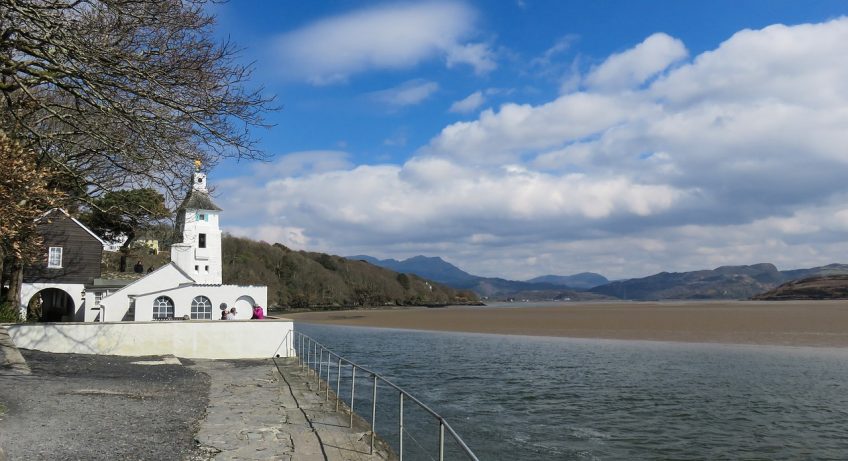Portmeirion was designed and built by Bertram Clough Williams-Ellis over a fifty year period between 1925 and 1975. Williams-Ellis left Cambridge without finishing his degree and worked for an architect company for a short time before at the age of just twenty-two he decided to leave and set up his own architect business. His story is entwined with Portmeirion, and it is the unusual architecture for the area, anyway and the history that makes Portmeirion so special.
To be honest, Portmeirion is now known as a tourist village location, but it is too good and too fascinating not to include in this list.
Williams-Ellis was not a trained architect; he was entirely self taught. Yet, he became a popular architect, known for his innovation. Even then, in the 1920s and ’30s, he believed that it was feasible to create buildings that were in tune with their environment and with minimal impact.
He searched for several years for a suitable location to build his ideal village. Eventually discovering that a nearby estate was for sale, so he made an offer and bought the land. He planned to demonstrate how a naturally beautiful location could be developed without spoiling the beauty; in fact, he went as far as to aim to actually enhance the natural background by sympathetically developing the location. The site was beautiful; a wide estuary with sandy beaches, steep wooded cliffs and streams. There were also some old buildings, two old castles, once beautiful gardens that he described as a neglected wilderness.
The village that stands there now is a testament to his vision. The first buildings were in the Arts and Crafts style, with later additions being Palladian. Several of the buildings were painstakingly salvaged from demolition sites. People have said that it is a copy of Portofino on the Italian Riviera, something that Williams-Ellis always denied saying that it was a tribute to Mediterranean atmosphere and style. Whatever the case, it is a little piece of Italy in North Wales.
Portmeirion is located in Ceredigion Bay on the estuary of the River Dwyryd and falls within Snowdonia National Park.
The village has a cult following as the location of the village in the 1960’s television show The Prisoner and Noel Coward wrote Blythe Spirit whilst staying there. A more recent claim to fame is that the Beatles spent a lot of time there. In 2012 a music festival was held there featuring Primal Scream and New Order, and there has been a music festival there every year since to 2019 and hopefully will be again.
Portmeirion is an essential place for those interested in architecture to visit, and that was the plan to showcase architecture. The location is beautiful, both the natural beauty and the manmade. As well as the stunning village, there are spectacular views from the village and it is a lesson in conservation, preservation and architecture.
Portmeirion is owned by a charitable trust, and it is possible to stay there in the hotel or to buy a pass to visit for a day. The sandy beach is close to the village and offers a lot of sand when the tide is out.
Photo: David Lloyd on Pixabay

